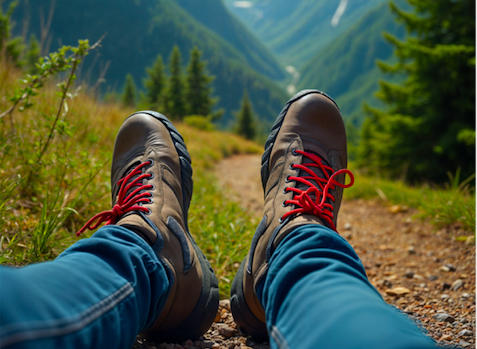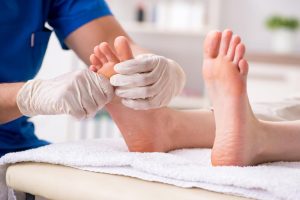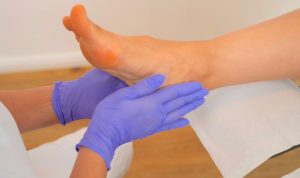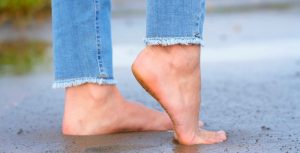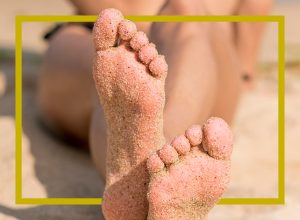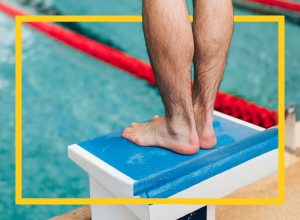Finally back out into nature in the sunshine and pleasant temperatures. The weather is perfect for getting out and about again. But of course your feet and outfit have to be right. Otherwise you could be in for a rude awakening later on.
How can potential problems be prevented and what tips can help to prepare your feet so that they stay healthy and fresh during your hikes? Here are the tips in our article: Hikers and foot problems: 5 tips for healthy feet.
What foot problems can occur when hiking?
Each foot consists of over 26 bones and 33 joints, which are connected by more than 100 ligaments and 20 muscles. If these are incorrectly loaded or strained too much when walking, they can cause pain or a wide range of problems, for example:
- Blistering due to excessive friction,
- Overloading due to weak muscles,
- Pain due to flat feet,
- Athlete’s foot caused by the wrong socks or shoes,
- or discomfort on the inside of the ankle due to tendinitis.
To counteract such problems, we have some helpful and preventative tips here.
5 tips for healthy (hikers’) feet
Training the feet
Light exercises or walking barefoot before the planned hike help to prepare the feet for the upcoming exertion. This strengthens the foot and arch and improves balance and stability.
Walking barefoot around the house or in the garden also makes the skin more resistant, as calluses form. Even if calluses are otherwise undesirable, they provide optimum protection against possible unpleasant consequences, such as blisters, when walking.
Getting toenails to the right length
Nails that are too long or shortened incorrectly can be quite annoying on a hike. It is best to shorten your nails properly a few days before the tour, i.e. not too short and not rounded, but cut them straight. Sharp edges should be avoided and the skin on the nails should be treated gently. This will prevent possible injuries or inflammation during the heavier strain of the hike.
If you want to be on the safe side, care for nails and the surrounding skin with intensively nourishing and protective products such as Spirularin N Nail Serum or Spirularin NF Nail Fold Ointment.
Choosing the right socks
Even though cotton socks are usually recommended to prevent sweaty feet, socks have a special function when hiking. They should cushion, protect against friction and create a healthy foot climate. Special hiking socks are therefore recommended, which offer precisely these functions.
Cotton socks, on the other hand, absorb possible moisture and dry slowly. Merino wool or blended fabric socks with virgin wool are more suitable here. They are breathable and temperature-regulating. Synthetic fibers should be avoided, as they very quickly create a damp climate and offer pathogens optimal conditions to multiply and penetrate the skin.
If your shoes do get damp, clean and dry spare socks can help. These fit in any rucksack, don’t weigh much, but help to keep your feet healthy.
Get suitable shoes
The shoes should offer the right fit and good support, i.e. above all not too tight and not too wide. Otherwise, there is a risk of too much pressure and friction on the feet, which often results in blisters, among other things.
To make this possible, it is advisable to go to a specialist store to find the right shoes for the individual needs of your feet. This also means that the shoes should be breathable and cushioning.
Don’t forget: Always air or dry your shoes well after a hike. And shoes should always be well broken in before the tour.
Foot care afterwards
After your feet have done their work, they can also be pampered. A foot bath followed by care helps them to recover. Spirularin HF Gel, for example, which also has a refreshing and cooling effect, can help with this. The product can also be massaged into the skin. This is not only beneficial, the spiralin it contains also provides lasting protection for the feet.
Did you like the article: Hikers and foot problems: 5 tips for healthy feet, did you like it? You can find even more tips on proper foot care and skin protection in our expert tips on ocean-pharma.de
Image source: Cadengo / stock.adobe.com
Experten-Tipp entstand in Zusammenarbeit mit:

Dirk Fenzl
Dirk Fenzl has been working in medical foot care for over 40 years. As a state-certified nurse, podiatrist and sectoral alternative practitioner, he has turned his passion into his profession. In his podiatry practice, he looks after his patient base together with a 20-strong team.
